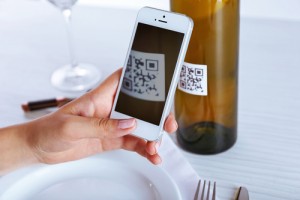Global wine drinking habits continue to shift from bars and restaurants to at-home consumption, with 60% of world wine sales being made to consumers for personal consumption, and that percentage is expected to continue rising until the year 2020. A change in consumer drinking habits means marketing campaigns will need to shift accordingly. According to a study commissioned by the international wine and spirts exhibition Vinexpo, there are currently five trends that will continue to dominate the wine marketing world for the foreseeable future:
 Did you know that wine drinkers are 45% more likely to use mobile devices and spend 35% of their time on them compared to the average consumer who spends 24%? It’s true, yet overall brands spend only 8% of their marketing dollars on mobile marketing. The Internet Advertising Bureau (IAB) conducted a study which showed some interesting data about adults who were planning to spend money on wine in the coming 90 days:
Did you know that wine drinkers are 45% more likely to use mobile devices and spend 35% of their time on them compared to the average consumer who spends 24%? It’s true, yet overall brands spend only 8% of their marketing dollars on mobile marketing. The Internet Advertising Bureau (IAB) conducted a study which showed some interesting data about adults who were planning to spend money on wine in the coming 90 days:
It’s obvious, then, that there is real potential in optimizing mobile marketing as a relationship building tool with consumers.
A good start is building a mobile-friendly website which offers customers a streamlined wine-buying experience. Not only do mobile-friendly sites place higher in search rankings, surveys show that eight out of 10 people go to a website to research a wine, and over 50% of those eight do their actual research while standing in line. Apps are a popular choice with serious wine lovers, so brands should think about either developing or partnering with one. Finally, consumers expect brands to communicate with them on their platforms, but to not disrupt their mobile experience. Advertising should blend seamlessly with what they are doing and it should be targeted at the right time, in the right way.
Brands that choose to position themselves as digital marketing leaders are perceived as cutting-edge and sophisticated. Consumers look to them to stand out from the rest of the crowd, and one of the key ways to achieve this is through packaging such as silk screen bottles. Packaging is a vital communication tool in the marketing of wine and creates substantial additional value to a brand. Silk screen bottles can function as works of art that communicate superior quality and high achievement and at Bottleprint we can customize silk screen bottles that are creative, innovative, and sure to enhance your marketing strategy. Contact us today to learn how.